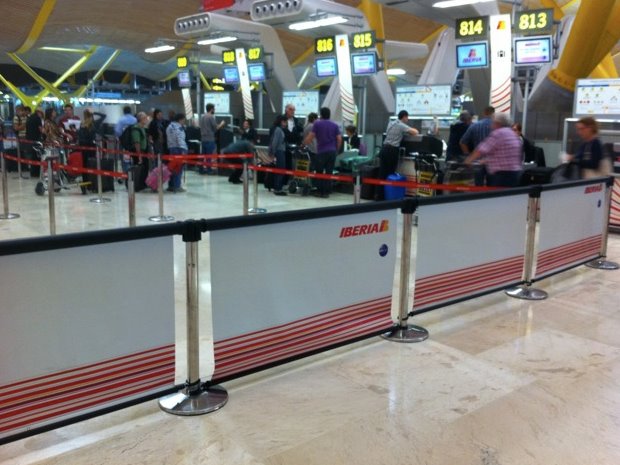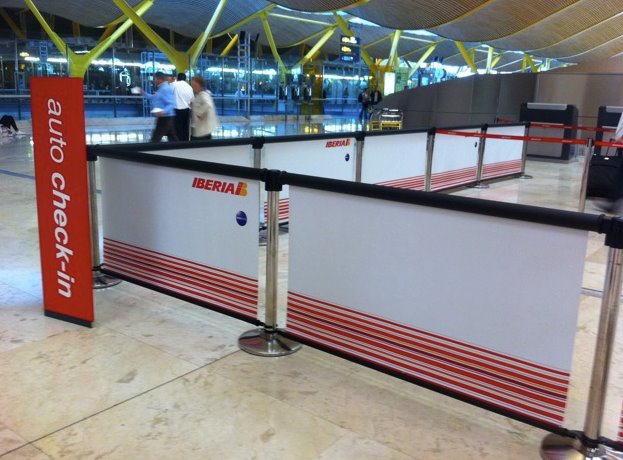
In The case of many (case crates Hypermarkets), multiple queues can be created; example1 by file boxes by QE3 group. The counting and estimating expectations accurate queuing system in each row causes the dynamic assignment of cases to close files (eg the number of boxes per row can vary between 1, 2, 3,4 or 5) to ensure that the time of Waiting a customer arriving at the checkout area will be the same regardless of the selected file. This principle applies customer queue management equally to cases with physical hostesses as automated boxes normal or priority passage, in these cases, it will be some files that will be specialized, but the principle of automatic assignment of cases to queues is also applied. Other Future solutions, using intelligent and communicative carts allow customers to indicate they want to spend on hand while they are still accurate queuing system on the shelf. They are virtually directed to a crate to ensure a service without waiting when it's their turn to go in hand.
These solutions, possibly coupled with an estimate of the cash flows by measuring inputs customer queue management allow optimum efficiency with satisfied customers and a significant gain in productivity. Benefit: Enables active and free pending Downside movements: the cost (but minimal) Use: first reception in the CPAM, CAF, Taxes, simple hosting service, withdrawals goods Advantages: allows an active and open pending movements; manages the resources, the call for reinforcements, and the measures of time and various analyses. Inconvenient: cost (but minimal compared ROI, satisfaction of customers and employees working comfort) Use: travel reservations, withdrawals of goods customer queue management Advantage: little organization to predict Disadvantages: Waiting passively resources frozen by services; no appointment possible. Use: All sites without host manager, making several services. Advantages: allows for active and pending free movement; manages the resources and call for reinforcements, identify the Visitor/ Customer and the measures of time and various analyzes.
Disadvantage: cost (but minimal compared ROI, satisfaction of customers and employees working comfort) Use: Medium and large post offices, telecom shops, pharmacies, receptions with kitchen areas, SAV, rays to the cut, modern receptions of CPAM, accurate queuing system CAF, taxes, town halls also applied to receptions with interviews can be very long (kitchen rays, woodwork), to allow freedom in the store before receiving the Ray. Variant with previous organizations, in addition, on receiving an customer queue management appointment for a harmonized management of spontaneous receptions and receptions by appointment with the same host resources. Advantage: Manage mass receptions for several organizations (the call is made by lot). Use: Home Management with large flows and call for a series of numbers to different organizations. Other alternatives queuing options may apply to specific cases such as for example: -The use of a Pass (with barre1 or 2D code, RFID code, Pager, Smart phone) in order to allow the visitor/ client to access the service he wants whenever he wants.
Managing expectations crates by pooling multiple call forward systems with counting in each line and dynamic assignment of customer queue management cases to queues to ensure the visitor/ customer wait time identical regardless of the selected file (coupled to the looking information to ensure the openings/ closings adequate funds). The waiting times are measured as accurately as possible by simulating treatments accelerated with all choose site conditions and arrivals scheduled appointments considered. They may be made on video, on signs, on the Internet, sent directly to smart phone or SMS. In addition to the requested service, a reason to visit may be requested to refine the orientation, conditions of early referral and time estimates hold.

